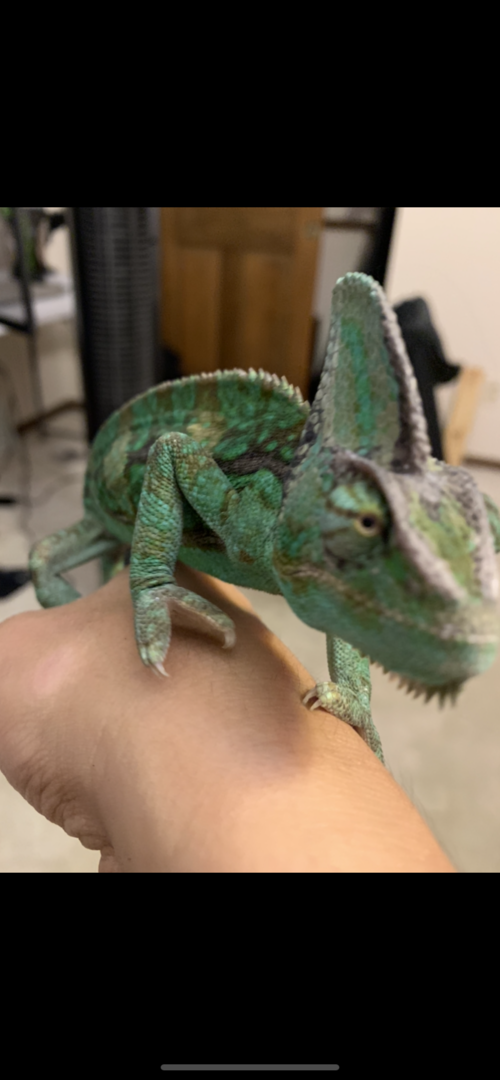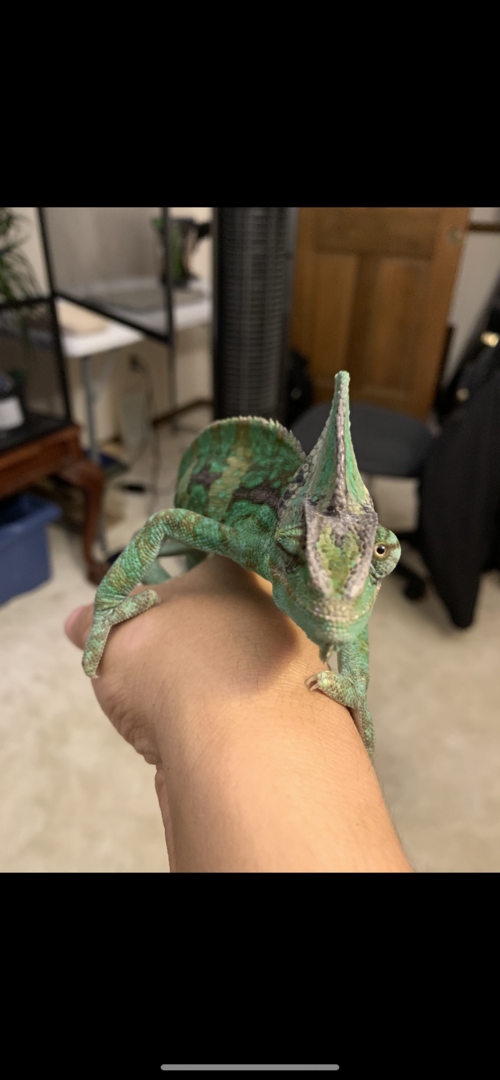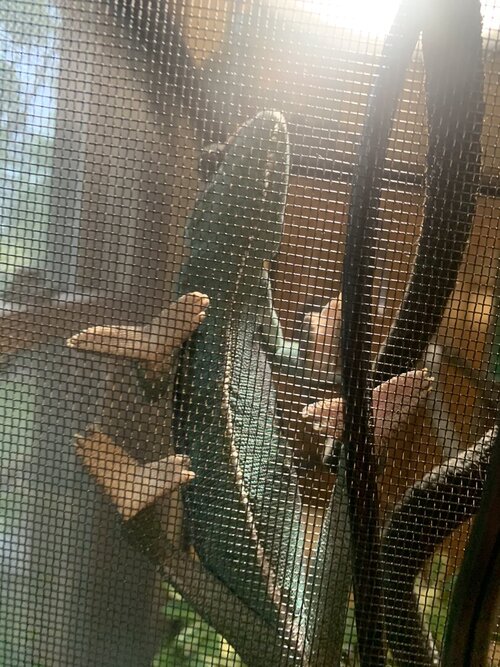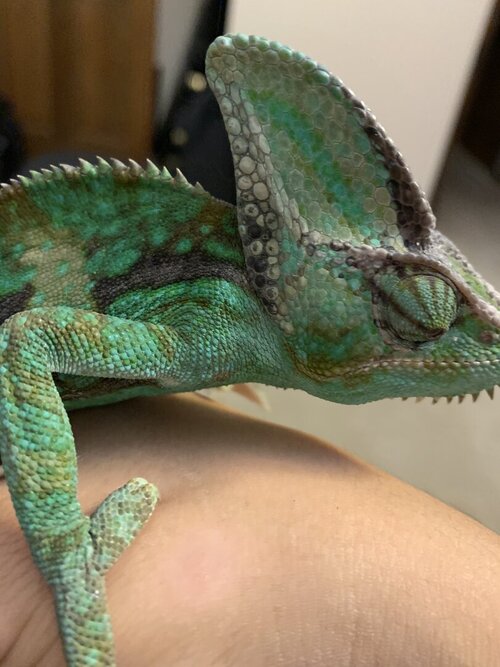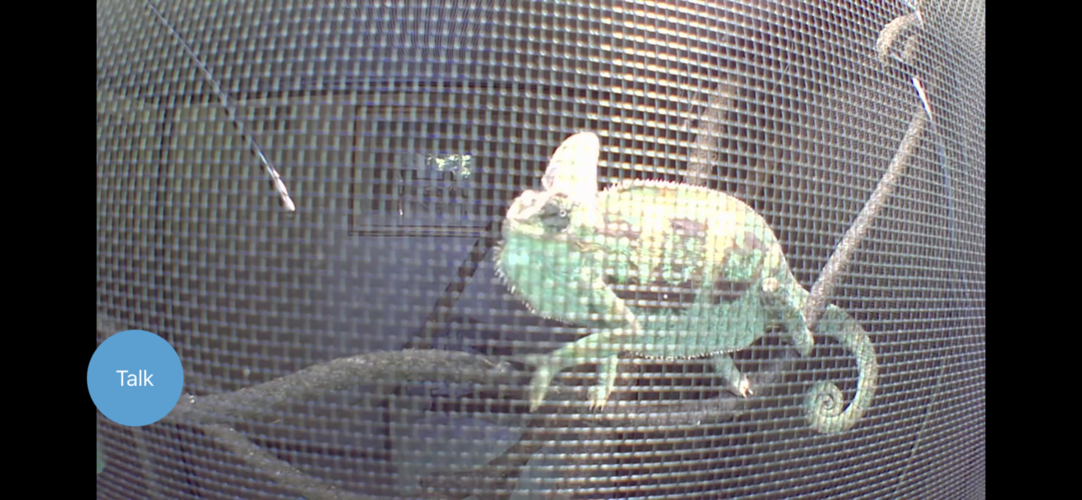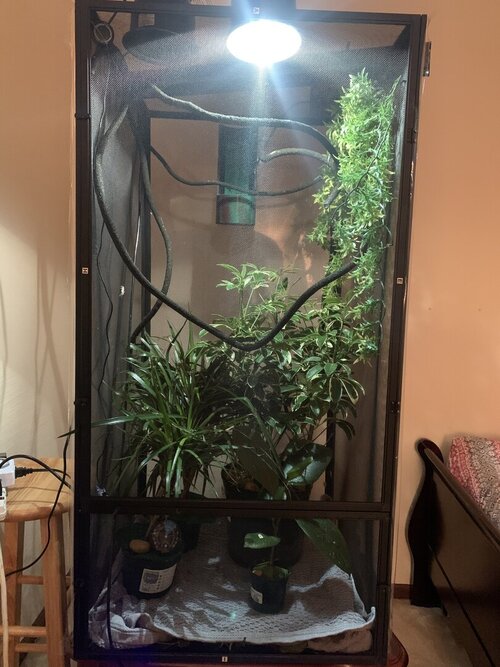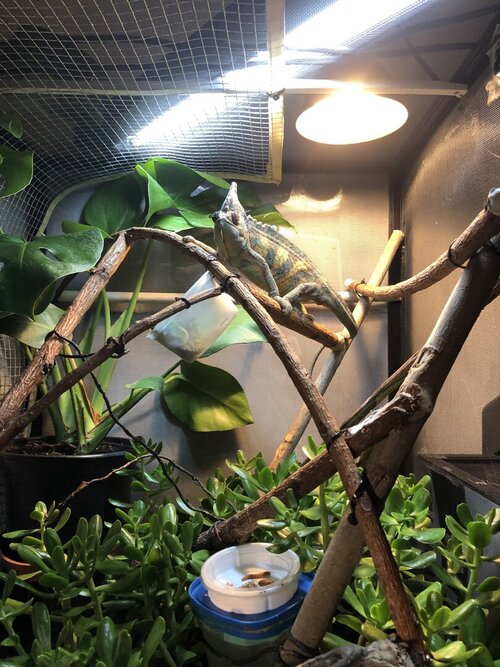Ryan4eagles
New Member
Hello,
I got a juvenile male veiled chameleon about 6 weeks ago. I was not aware that he needed a separate UVB bulb so he’s been on heat only. I’m now worried that he’s in the early stages of MTD. I got a 10.0 Reptisun on Friday as soon as I found out that he needed separate UVB lighting. It seems like he hardly has been eating the past month or so. I fed him some crickets/a Dubai roach and some mealworms yesterday with calcium (placed in his mouth while he was gaping at me). Even though UVB has been added, today I noticed he was sleeping at 6pm and he seems very tired and I’m worried he’s going downhill. Can you please advise me on next steps?
a little background info, about 2-3 weeks ago I moved him from a glass terrarium to a XL screened reptibreese. I moved him by a window which I recently learned was a bad idea so he’s now in the corner of my room. I’m running an automatic mister for 2 minutes every 2 hours with a 60 watt heat bulb (and as of Friday a 10.0 reptisun bulb) and a drip system. Enclosure has four live chameleon safe planes and fake vines. His main diet has been crickets and mealworms but he hasn’t eaten anywhere as much as he should have since I got him. He has not been getting frequent calcium as he hasn’t been eating much.
His urate is white as snow but his stools as small, wet and dark brown (nowhere near the large stools he was producing when I first got him). I am attaching some recent pictures of him.
I got a juvenile male veiled chameleon about 6 weeks ago. I was not aware that he needed a separate UVB bulb so he’s been on heat only. I’m now worried that he’s in the early stages of MTD. I got a 10.0 Reptisun on Friday as soon as I found out that he needed separate UVB lighting. It seems like he hardly has been eating the past month or so. I fed him some crickets/a Dubai roach and some mealworms yesterday with calcium (placed in his mouth while he was gaping at me). Even though UVB has been added, today I noticed he was sleeping at 6pm and he seems very tired and I’m worried he’s going downhill. Can you please advise me on next steps?
a little background info, about 2-3 weeks ago I moved him from a glass terrarium to a XL screened reptibreese. I moved him by a window which I recently learned was a bad idea so he’s now in the corner of my room. I’m running an automatic mister for 2 minutes every 2 hours with a 60 watt heat bulb (and as of Friday a 10.0 reptisun bulb) and a drip system. Enclosure has four live chameleon safe planes and fake vines. His main diet has been crickets and mealworms but he hasn’t eaten anywhere as much as he should have since I got him. He has not been getting frequent calcium as he hasn’t been eating much.
His urate is white as snow but his stools as small, wet and dark brown (nowhere near the large stools he was producing when I first got him). I am attaching some recent pictures of him.
Attachments
Last edited:

